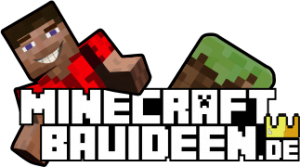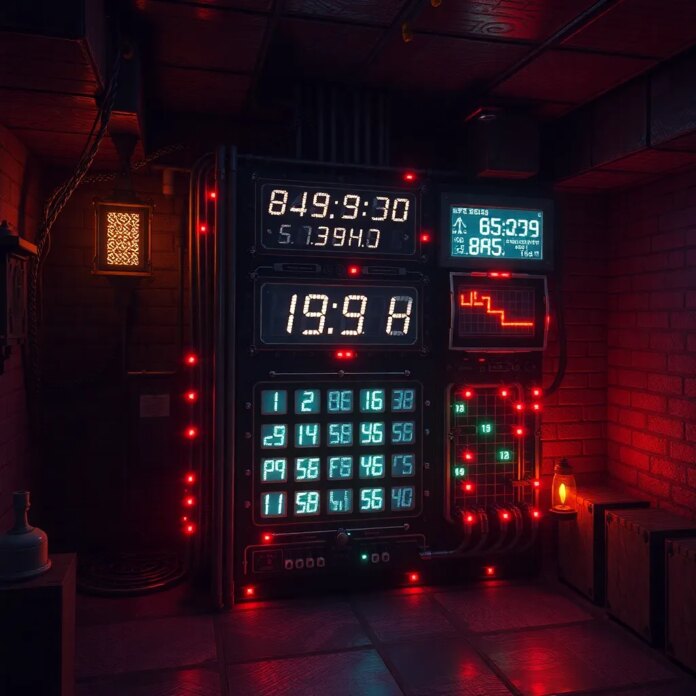Introduction to Redstone calculators
Redstone calculators in Minecraft are true masterpieces of digital construction. These complex constructions impress not only with their functionality, but also with their creative use of game mechanics. From simple adders to full-blown scientific calculators, the Minecraft community has proven that with enough dedication and understanding of redstone circuitry, almost anything is possible. In this blog post, we dive deeper into the world of redstone calculators, explaining their basics, advanced features and impact on the Minecraft world.
Basics of the binary number system and Redstone
The basis of every Redstone calculator is the binary number system. Players must first understand how to convert decimal numbers into binary numbers and then process them using Redstone circuits. An elementary component for this is the so-called "full adder", which makes it possible to add two bits and take a possible carry into account. By concatenating several such full adders, larger numbers can then be added together.
The binary system is essential, as redstone signals only have two states: on (1) and off (0). This system forms the basis for all logical operations within the computers. Players must therefore develop a solid understanding of logical gates such as AND, OR and NOT in order to be able to perform complex calculations.
Structure of a simple Redstone pocket calculator
The construction of a simple Redstone calculator begins with the construction of adders. A simple adder can already perform basic arithmetic by adding two numbers and displaying the result. Here are the basic steps:
1. wiring the circuits: Placing redstone components such as repeaters, comparators and redstone dust to create the circuit paths.
2. creation of full adders: These blocks add two binary numbers and calculate the carry.
3. chaining the adders: Several full adders are connected in series to handle larger numbers.
4. display of the result: use of lamps or pistons to visualize the calculated result.
This modular structure allows players to gradually increase the complexity of their computer and implement additional functions.
Extended functions of Redstone pocket calculators
Advanced Redstone calculators go far beyond simple additions. They can handle subtraction, multiplication and even division. Some particularly sophisticated designs can even handle decimals or calculate trigonometric functions. The complexity of these designs is often staggering, with thousands of redstone components that must be precisely coordinated to ensure error-free calculations.
Additional features include:
- Saves intermediate results: Enables chain calculations to be performed.
- Error messages: Display of overflows or divisions by zero.
- Support for multiple number systems: Switch between decimal, binary and hexadecimal representations.
These advanced features make Redstone calculators versatile tools that enable complex math operations within Minecraft.
Complex designs and 32-bit computers
An impressive example of the performance of Redstone calculators is a 32-bit calculator capable of processing 14-digit numbers. Such calculators often have separate areas for different functions such as input, processing and display. Input is typically made via a keyboard of redstone switches, while the result is shown on a display constructed from lamps or pistons.
The construction of such a computer requires not only a deep understanding of redstone mechanics, but also of digital logic and computer architecture. Players need to replicate concepts such as gates (AND, OR, NOT), flip-flops and multiplexers in Minecraft. This makes building redstone calculators an excellent way to learn the basics of computer technology through play.
Optimization of the redstone circuits
The efficiency and compactness of redstone circuits are other aspects that builders are trying to optimize. While early designs often took on huge proportions, clever players have found ways to fit functionality into tighter spaces. This often requires innovative solutions and the use of redstone tricks that push the limits of game mechanics.
include optimization techniques:
- Minimization of signal paths: Shorter connections reduce the signal delay.
- Use of clock generators: Synchronization of the circuits to improve processing speed.
- Compression of the circuits: Use of compact circuit designs to save space.
Thanks to these optimizations, Redstone pocket calculators are not only faster, but also more space-saving.
Modularity and extensions
One fascinating aspect of Redstone pocket calculators is their modularity. Many designers build their calculators in such a way that individual components can be easily replaced or extended. This makes it possible to gradually expand the range of functions or make improvements without having to redesign the entire system.
Advantages of modularity:
- Easy expandability: Add new functions without extensive modifications.
- Troubleshooting: Problems can be localized and rectified more easily.
- Flexibility: Adaptation of the computer to specific requirements or tasks.
Some ambitious projects even go so far as to create programmable computers that can be configured for different tasks by changing the redstone wiring.
Community and resources
The community around Redstone calculators is extremely active and helpful. Players share their designs, discuss ways to improve them and offer tutorials to help others get started with this complex subject. There are numerous YouTube channels and forums dedicated specifically to redstone technology and calculator design. These resources are invaluable for anyone looking to delve into the world of Minecraft calculators.
Popular resources include:
- YouTube tutorials: step-by-step instructions and demonstrations.
- Forums and community pages: Exchange of ideas and solutions.
- Online guides: Detailed construction plans and technical explanations.
With the support of the community, even inexperienced players can make rapid progress and build complex calculators.
Aesthetic design of Redstone calculators
Redstone pocket calculators are not only technical masterpieces, but also aesthetically pleasing creations. Many builders attach great importance to making their constructions visually appealing. They integrate the redstone circuits into architecturally interesting structures or use colored blocks to identify different functional areas.
Examples of aesthetic designs:
- Futuristic buildings: Integration of computers in modern or futuristic structures.
- Steampunk themes: Use of redstone in combination with other materials for an industrial look.
- Theme-based environments: Embedding computers in thematically appropriate landscapes, such as laboratories or cities.
These aesthetic aspects make Redstone pocket calculators impressive structures that are both functional and visually appealing.
Applications and integration in Minecraft
The development of Redstone calculators also has an impact on other areas of the Minecraft game. The knowledge and techniques gained are used in complex automation systems, mini-games or even in the creation of simple computers within Minecraft. This shows how the seemingly simple mechanics of the redstone system have become a powerful tool for creative and tech-savvy players.
Possible applications include:
- Automated farms: Use Redstone to control harvesting and distribution.
- Mini games: Integration of calculation functions in complex game mechanics.
- Interactive systems: Creation of computers that interact with other Redstone systems.
These versatile applications show the enormous flexibility of Redstone calculators and their importance within the Minecraft world.
Educational use of Redstone calculators
For educational institutions, Redstone calculators offer a unique way to teach students the basics of computing in a fun way. Some teachers use Minecraft and specifically Redstone projects to teach concepts such as Boolean algebra, circuit design or even basic programming concepts. The visual and interactive nature of Minecraft makes it an ideal medium to make abstract concepts tangible.
Educational benefits:
- Interactive learning: Students can gain deeper insights through practical applications.
- Promoting creativity: Encouraging the development of own circuits and systems.
- Understanding logic and mathematics: applying theoretical concepts in a playful environment.
These educational aspects make Redstone calculators a valuable tool in modern education.
Future prospects for Redstone pocket calculators
The future of redstone calculators in Minecraft looks promising. With each update of the game, new possibilities are added and creatively utilized by the community. It is fascinating to see how players continue to push the boundaries of what is possible, creating constructions that are increasingly similar to real computers in terms of their complexity and functionality.
Future developments could include:
- Integration of new Redstone mechanics: Use of updates to improve computer functions.
- Expansion of computing capacities: development of even more powerful and complex computers.
- Collaborative projects: Large collaborative projects that utilize collective creativity and technical know-how.
These developments ensure continued relevance and innovation within the Redstone community.
Conclusion
Redstone calculators in Minecraft are more than just gimmicks - they are an expression of human creativity and technical understanding. They impressively demonstrate how complex systems can be created from simple rules and inspire players to constantly push the boundaries of the game and their own understanding. In a world where digital literacy is becoming increasingly important, these fascinating constructions offer a playful approach to fundamental concepts of computer science and electrical engineering.
Combining technical precision and aesthetic design, Redstone calculators add significant variety and depth to the Minecraft experience. Whether as a personal project, educational tool or community initiative, the possibilities are almost limitless.





